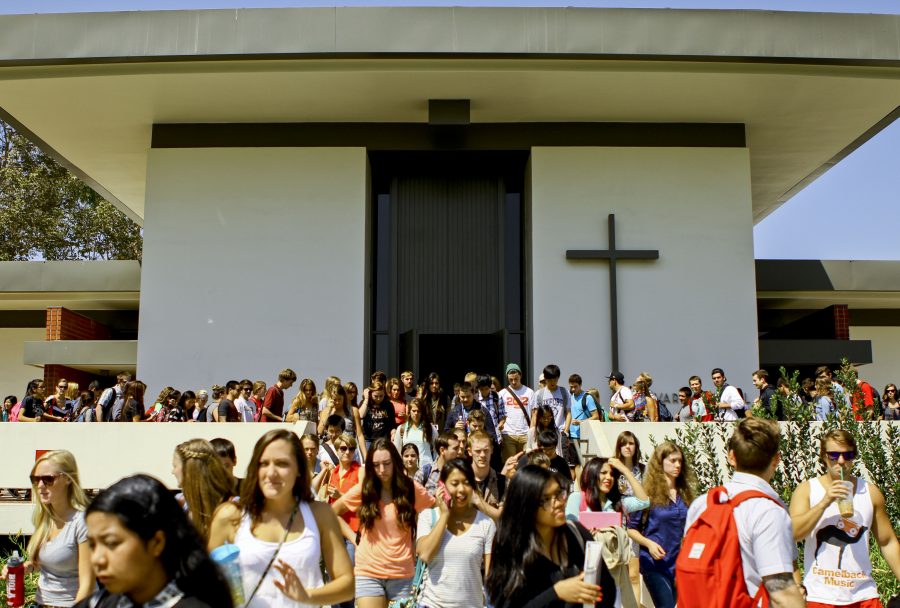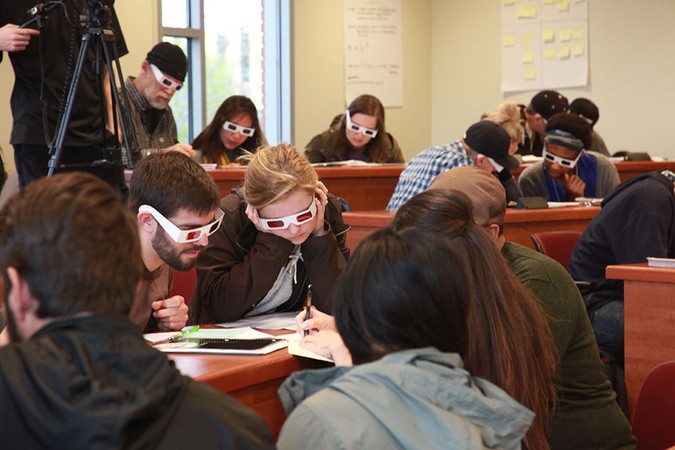.jpg)
For most of Biola, Typhoon Haiyan — which devastated the Philippine Islands Friday, Nov. 8 — seems like a distant and unrelatable event. But for others, it hit a little too close to home.
Typhoon Haiyan was a category five storm, the second most powerful storm to make landfall in history. Officials confirmed that the storm has killed over 3,600 people and injured over 12,400, with more than 1,100 missing. These numbers are still stabilizing as bodies are found and the lost return to their loved ones.

A close call
Yvette Fries, sophomore journalism major, has eight Filipino aunts and uncles on her mother’s side — all with entire families living in the province of Guimaras. Although her family fully anticipated the typhoon would decimate their island, the storm fell upon the shores of two other provinces: Leyte and Eastern Samar.
Typhoon Haiyan completely flattened Tacloban City, the capital of Leyte. Had the typhoon redirected to hit the island of Guimaras, about 300 miles from Tacloban City, Fries’ extended family could have had much more destruction. Her family’s area experienced minor damage, including missing roofs from their homes.
Fries stated that a lot of homes in the Philippines are built out of bamboo and palm leaves — even a wind of medium strength can knock them over. The storm wreckage resulted from wind gusts up to 200 mph, affecting more than 11 million people in the country.
Fries realized soon after the typhoon that not everyone escaped the storm’s strong hand as easily as her extended family.
“My mom had a friend growing up who is now a pastor. He was in the middle of the storm and my mother hasn’t heard from him at all. She’s been trying to send out messages but hasn’t heard a single word from [his family],” Fries said.

Dorothy Calley, assistant professor of communication studies, grew up in Tacloban City, right in the midst of where Typhoon Haiyen hit hardest. Many of Calley’s friends and family still lived in Tacloban when the typhoon surprised their province. They had to stockpile food, water and supplies to aid in the aftermath of the typhoon. Supplies ran low as the storm hit harder than they could plan for.
“The house I grew up in was totally destroyed and our whole neighborhood was destroyed. There were some missionaries who lived down the street and their house was destroyed. All of the houses around us were destroyed,” Calley said.
Calley said that she has a family friend in the Air Force who held onto a tree when the storm surged, but the strength of the storm forced him to let go. He ended up washing onto the shore a couple miles away, still alive. Another man she knew who lived down the street from her survived by holding onto a still-grounded beam as the water hit him. Calley’s family neighbor also survived, but her son was missing until sometime on Saturday, and he is now recovering with medical assistance.
“I’m planning on going back [to visit] in two years. There’s still going to be a lot of relief going on at that time. It’s going to take years for this to blow over. But they have a lot of support from other countries. There are 22 countries helping the Philippines right now,” Fries said.
More than the Filipinos
Among the many Filipino families grieving over the loss of friends and family members, many Biolans deeply grieve over their perished and missing loved ones. Due to the constant threats of food and supply riots, the military escorted Calley’s father to Tacloban last week to deliver water filtration systems and food. She anxiously awaited his call to let her know that he had arrived safely.
“[The recovery has] been very, very challenging. I’m worried about people; it’s all I can think about. I’ve had trouble sleeping because I see the faces of people I know and love,” Calley said. “I’m [still] trying to comprehend it. There has been a lot of grief, and I’m asking God to protect people.”
In addition to Calley, Fries is equally devastated. Having been to the country multiple times and having seen the country before the typhoon, Fries can’t grasp the thought of the mass destruction that slammed the country.
“It’s really tragic to see because they’re already a third world country. To have something this big happen to them is just devastating for me … I’ve been there three times, so I can’t imagine actually being there and seeing what the storm has done. I’d probably start crying,” Fries said.
Relief efforts
As hopeless as the Filipino people may feel, many are attempting to provide hope. The Filipino government has been sending military planes to Tacloban City to take citizens to Manila — the capital of the Philippines — to get supplies. Survivors are fleeing to nearby islands via military planes or ferries to search for supplies and safety. Calley’s mother told her on Monday, Nov. 18 that the current line to board a ferry off of the island was about three miles long. Because the ferry travels several hours each way, providing relief for citizens on and off the island has been difficult and time-consuming.
“There has been a lot of looting and gangs, so many people have gone to other cities. In terms of people who are still [in Tacloban City], they’re trying to survive as [best] as they can," Calley said.
Calley explained that Filipino people direly need food and medical supplies. Riots have been present when planes drop supplies on the islands, particularly because males are literally fighting to keep their families alive. It has become one of the biggest problems on the decimated islands.
We can help
A tragedy or natural disaster occurring 7,300 miles from campus may seem irrelevant and unimportant for Biola students, but Calley argues otherwise.
“This is a worldwide crisis. A lot of times students at Biola are so in their own world, and they think things going on have nothing to do with them,” Calley said.
Calley passionately supports relief effort in the Philippines and student missions in general.
“If you think about all the orphans and widows in this, God clearly tells us in the Bible to take care of them. That is very relevant to Biola, but people have to get outside of their comfort zones and be willing to be affected,” Calley said.



![A doppler photo of Typhoon Haiyan that caused the most destruction in Tacloban City, Philippines. | wikimedia.org [Creative Commons]](https://chimesnewspaper.com/wp-content/uploads/2013/11/wikimedia.org-haiyan.jpg)



